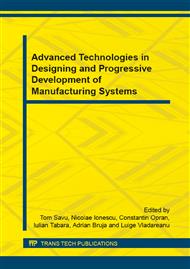p.99
p.105
p.111
p.117
p.123
p.129
p.135
p.141
p.147
Analysis Based Optimization of Human Powered Vehicle Body
Abstract:
The human powered vehicle market is not only a larger market per unit than the automotive market, but it is one in growth. The main product of this market is the classical bicycle, which is familiar around the globe, but mainly in the urban environment. The bicycle, which in this paper will be considered a human powered vehicle, is slowly gaining ground in the field of urban transportation solutions. This paper analyzes the possibility of optimizing the body of a human powered vehicle recumbent tricycle through continuous fluid dynamics. The vehicle is already designed and built, and is fully functional. The body of the vehicle comes as a necessity to give the operator protection from the elements, but the main reason is, to give the vehicle less air resistance. This would be a great benefit to the operator and the perceived comfort. Usually the aerodynamics analysis comprise of a wind tunnel test that confirms the theoretical results. This paper shows the evolution of the body of a human powered vehicle as it is optimized after identifying the turbulent areas in its shapes. After optimization, a body is obtained which will be proposed for implementing over the built vehicle.
Info:
Periodical:
Pages:
123-128
Citation:
Online since:
May 2015
Authors:
Keywords:
Price:
Сopyright:
© 2015 Trans Tech Publications Ltd. All Rights Reserved
Share:
Citation:


